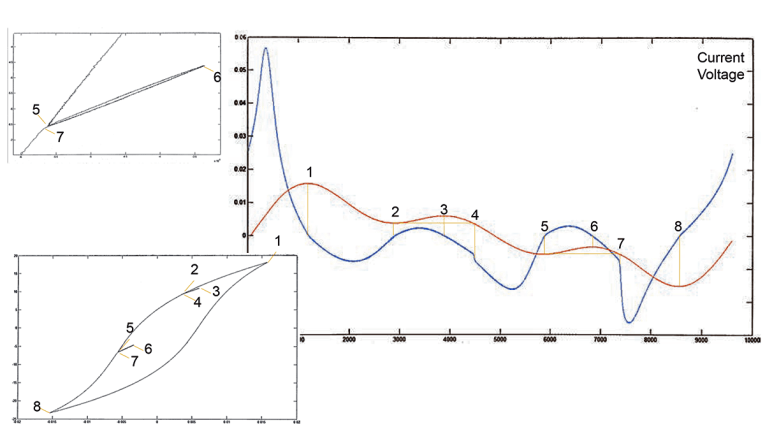Purifi Audio - A Straight Wire to the Soul of Music, October 23 2019
https://www.audioxpress.com/article/purifi-audio-a-straight-wire-to-the-soul-of-music

Figure 1: The magnetic flux depends not only on the point on the BH curve, but also on where at which point you were before — there is a memory effect of sorts.
Updated
[ So there is an element of hysteresis, memory if you like, which causes strong nonlinearity. Although the feedback loop decreases all nonlinearities it encloses, if the error is large enough it can make itself heard in the output signal. This also suggests the solution: just increase the loop gain (that is, the amount of feedback)!
The crux for increased feedback is a tailored compensation loop, but to be able to design that you need to be able to model how the amplifier (and its output filter with the output coil) varies in gain and phase at any load and any level within its working envelope, and adapt the feedback/compensation loop accordingly... ]
https://www.diyaudio.com/forums/class-d/321578-phase-shift-class-amplifiers-affects-sound.html
Phase shift:
* PURIFI 1ET400A: only 1º at 20 kHz.
* Hypex NC400: amirm -> about 16º - 17º at 20 kHz. NC500 must be the same.

and once again I will post Brunos explanation about phase shift in his class D designs which you repeatedly choose to ignore for some obscure reason.
https://audiophilestyle.com/ca/bits...eaders-qa-with-lars-risbo-bruno-putzeys-r815/
@Sagittarius: Class D has achieved very low levels of distortion, but is it possible for class D amplifiers to continue their evolution into something close to a straight wire with gain, i.e. minimal phase shift in the audio band? (A similar question from maty).
Bruno: The 1ET400 module has the frequency and phase response of a 2nd order Butterworth filter cornering at 60kHz. If you look at the phase shift of that, it’s very nearly “linear phase” in the audio band. To take some rough numbers, it if you have a circuit that has a 0.2 degree phase shift at 200Hz, 2 degrees at 2kHz and 20 degrees at 20kHz, that’s the same as saying it has “0.001 degree per Hertz” phase shift. That’s another way of saying that the whole signal is simply delayed by 2.8 microseconds. If you plot phase shift on a linear frequency scale that’s immediately obvious because you get a straight line. Of course a simple delay doesn’t change the sound. It’s literally the same as starting your music a few microseconds later.
Lars: My dad used to say that if you left a CD in its case without playing it back, it’d just sit there accumulating massive amounts of phase shift as time went by.
Bruno: What that matters to sound is how much phase shift differs from a pure delay. Anyone who’s ever done phase measurements on speakers will remember that you have to remove the time-of-flight delay from the data, for instance by marking the leading edge of the impulse response. Otherwise the linear phase shift corresponding to the distance between the speaker and the mic completely clouds the picture. In the case of the 1ET400 module it’s just under 1 degree at 20kHz. There never was a phase shift problem in class D, it’s simply a trick of the light that happens when you plot the phase response on a log scale without removing the fixed delay.

.jpg)